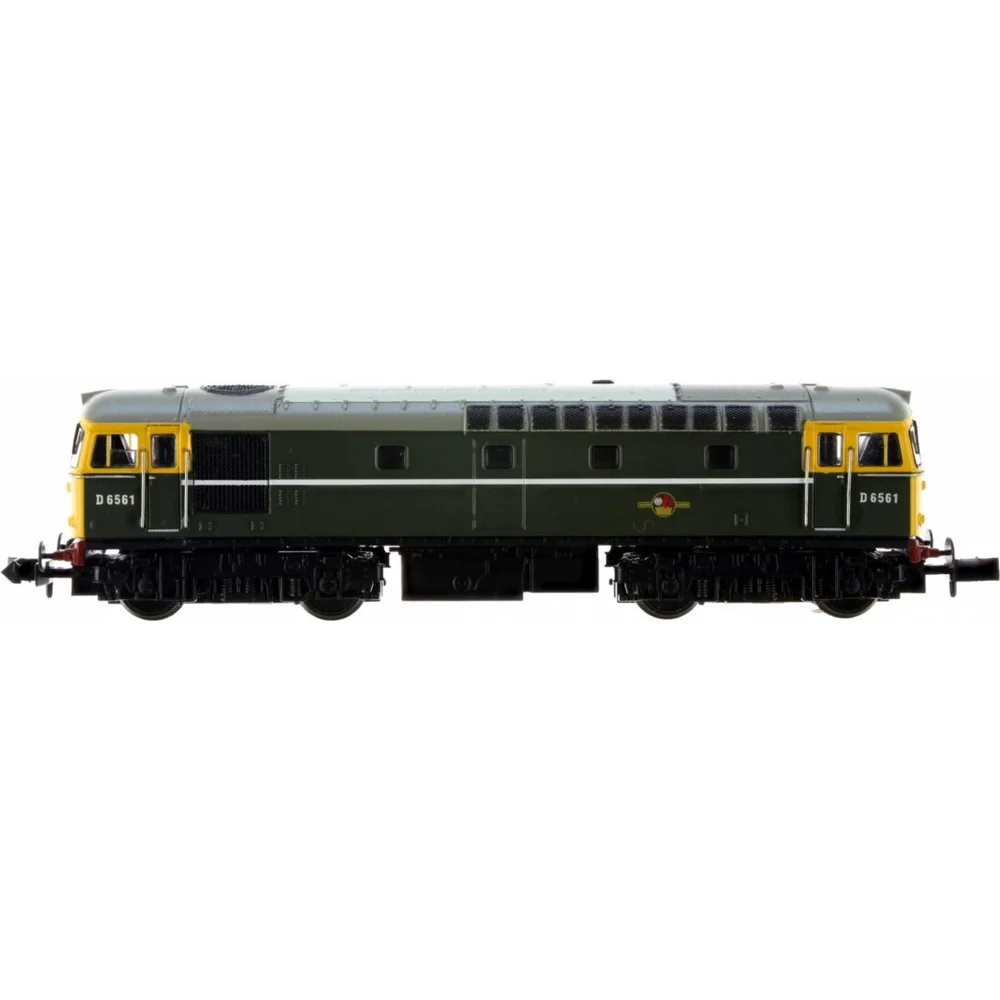Dapol 2D-001-008D
British Rail Class 33 D6561 British Railways Green with Late Crest
Class & Prototype
- Class: British Rail Class 33
- Traction: Diesel
- Transmission: Electric
- Built: 1960-1962
- Total Built: 98
- Running Number: D6561
The British Rail Class 33 "Crompton" represents one of the most successful Southern Region diesel designs. Built by Birmingham Railway Carriage and Wagon Company between 1960-1962, these 1,550 hp Bo-Bo locomotives featured Sulzer 8LDA28-B engines and Crompton Parkinson electrics. The 98-strong fleet comprised three variants: 86 standard Class 33/0 mixed-traffic locomotives, 19 Class 33/1 "Bagpipes" push-pull conversions, and 12 narrow-bodied Class 33/2 "Slim Jims" for the restricted Hastings line. They worked boat trains, branch passenger services, heavy freight, and pioneered push-pull operations with 4TC sets on the Bournemouth-Weymouth corridor from 1967-1988. Service life spanned 1960-2001, with 29 locomotives (30% of the class) preserved. Comprehensive model availability exists in OO gauge (Heljan), N gauge (Dapol), and O gauge (Heljan).
Operator & Livery
- Operator: British Railways
- Livery: Green with Late Crest
- Era: 5 - British Railways Late Crest
British Railways transformed Britain's fragmented rail network into a unified national system following nationalisation on 1st January 1948. Created from the "Big Four" companies under the Transport Act 1947, BR operated most of Great Britain's railways until rebranding as British Rail in 1965, managing over 20,000 route miles and inheriting nearly 20,000 locomotives of diverse designs.
The organisation pioneered standardisation through its revolutionary BR Standard locomotive programme (1951-1960), producing 999 advanced steam engines under Robert Riddles' direction. These included the versatile Britannia Pacifics, mighty 9F freight engines, and mixed-traffic classes that incorporated the best features from all predecessor companies. The 1955 Modernisation Plan accelerated diesel and electric traction development, creating fascinating mixed-traction operations.
Notable achievements included establishing unified locomotive classification systems, introducing distinctive corporate liveries, and managing the complex transition from steam to modern traction. BR's six regional structure preserved operational diversity whilst enabling standardisation of practices, signalling, and rolling stock that had eluded private enterprise for over a century.
The BR era represents steam traction's final flowering alongside emerging diesel technology, creating unparalleled locomotive variety. Today, this heritage remains highly popular with railway enthusiasts through extensive preserved fleets, heritage railway operations, and comprehensive model ranges from manufacturers like Hornby, Bachmann, and Dapol, making BR subjects essential for authentic post-war British railway modelling across all scales.
